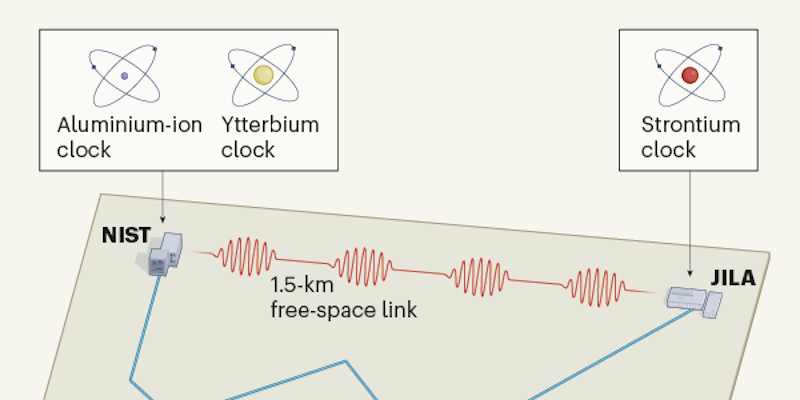
We normally think of atomic clocks as the gold standard in timekeeping. The very definition of a second — in modern times, at least — is 9,192,631,770 periods of the radiation corresponding to the transition between the two hyperfine levels of the ground state of a stationary cesium-133 atom at a temperature of 0K. But there is a move to replace that definition using optical clocks that are 100 times more accurate than a standard atomic clock.
In recent news, the Boulder Atomic Clock Optical Network — otherwise known as BACON — compared times from three optical clocks and found that the times differed a little more than they had predicted, but the clocks were still amazingly accurate relative to each other. Some of the links used optical fibers, a method used before. But there were also links carried by lasers aimed from one facility to another. The lasers, however didn’t work during a snowstorm, but when they did work the results were comparable to the optical fiber method.
A standard atomic clock takes a beam of atoms that are in two states and uses a magnetic field to remove all the atoms in one state. The remaining atoms are subjected to a microwave signal which causes some of the atoms to flip to the opposite state. Another magnetic field removes one state and the remaining atoms are counted. When the microwave signal exactly matches the material’s resonance frequency — 9.192631770 GHz, in the case of cesium — the number of atoms changing state will be at a maximum, so you know when you’ve hit the right frequency.
Optical clocks such as the aluminum ion, ytterbium, and strontium clocks have much higher resonance frequencies, high enough to be in the spectrum of light. This allows a much more precise frequency in the same way that a ruler with 32 marks will be more precise than the same ruler with 4 marks. While a cesium clock may be off one second in 100 million years, the optical clocks will take 15 billion years to have the same magnitude of inaccuracy.
If you want to build your own clock, you might start with rubidium at a less accurate 6.8 GHz. If you want to know more about how atomic clocks work, we have just the video for you.
0 Commentaires